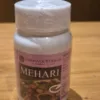Devadaru
|
Botanical Name |
Cedrus Deodara |
|
Family |
Pinaceae |
|
Sanskrit |
Amara, Amaradaru, Bhadradaru, Deodar, Amar |
|
English |
Deodar |
|
Hindi |
Diyar, Debdar, Deyodar |
|
Kannada |
Bhadradaaru, Devadaaru, Gunduguragi |
|
Malayalam |
Devataram |
|
Telugu |
Devadharu |
|
Tamil |
Tevataram, Tevataru |
|
Marathi |
Devataram, Devadaru, Ewadar |
Distribution
It is distributed in hindu kush- himalaya region , in india – jammu and kashmir, himachal pradesh, uttar pradesh
|
Parts Used |
Stem, Oil |
|
Dose |
Choorna 3-6 G, Oil-20-40 Drops |
Chemical Constituents
Dihydromyricetin, cedrine, deodorin, polphenolic acids, taxifolin
Ayurvedic Properties:
|
Quality (Guna) |
Lagu, Snigdha |
|
Taste (Rasa) |
Tikta |
|
Metabolism (Vipaka) |
Katu |
|
Potency (Virya) |
Ushna |
|
Impact (Prabhava) |
Vedanasthapan |
Pharmacological Action:
- Antifungal- effective against fungus
- Anti tubercular-shows good anti tubercular activity caused by mycobacterium tuberculosis
- Anxylotic and anti convulsant- it reduces anxiety and used to prevent convulsions
Therapeutic Uses
Relives hiccoughs and extracts are good to treat skin disorders
Some of the common formulations
- Abrak bhasma
- Anu taila
- Chandanadi choorna
- Chandra prabha vati
- Ksara taila
- Kalyanaka ghrita




